Tuesday, April 05, 2011
Stephen Hess and Sandy Northrup speak three times on editorial cartoons
Saturday, March 05, 2011
American Political Cartoons, 1754-2010 book
Saturday, January 01, 2011
Fredric Wertham Papers opened at Library of Congress - the author's cut
This was shortened drastically when it appeared in the Washington City Paper's print version and online as "Hate Comic Books? Library of Congress Opens Papers of Comics Opponent Fredric Wertham," Aug. 11, 2010, http://www.washingtoncitypaper.com/blogs/artsdesk/books/2010/08/11/hate-comic-books-library-of-congress-opens-papers-of-comics-opponent-fredric-wertham/ last year. Completely understandable, as I turned in 3,500 words when they asked for 2,000 and had space for 1,000. Starting a new year, I'll assume ComicsDC readers may be interested in the longer version. My thanks again to everyone who helped me out and cooperated with writing this. Except for the first 3 words, this is as I wrote it last August.
This past summer, the Library of Congress opened a collection of papers from the man who almost singlehandedly destroyed comic books in the 1950s. Or perhaps they instead opened the collection of one of the first psychologists to be concerned with children's mental health and pop culture's possible effects. Opinions vary, and people of good faith disagree, but this past May, the Library of Congress quietly opened 222 containers of psychiatrist Fredric Wertham's papers. While the great majority of Americans haven't heard of the man, for a select few, the ability to read through his letters will be a big deal. That's because Fredric Wertham wrote a book about comic books and juvenile delinquency. Wertham's Seduction of the Innocent came out in 1954 as a culmination of a decade-long campaign against comic books, and quickly became a rallying point for Cold War concerns about teenage culture. Although the Library has had the records since 1987, they've been sealed except to people approved by Wertham's estate—and in that time, only two people were allowed to use them.
"For comic-book fans, Fredric Wertham is the biggest villain of all time, a real-life bad guy worse than the Joker, Lex Luthor, and Magneto combined," comics historian Jeet Heer wrote for Slate's review of David Hajdu's book, The Ten-Cent Plague: The Great Comic-Book Scare and How It Changed America. "For Wertham, even the most beloved comic-book heroes were suspect: Superman reminded him of Nazi Germany's SS (a cadre of self-styled supermen), the adventures of Batman and Robin had homoerotic overtones, and Wonder Woman threatened to turn healthy young girls into lesbians." Many comic book collectors believe that Wertham almost destroyed comics, as after being hauled before a Congressional investigation, publishers created a Comic Code Authority to self-police themselves and began selling the bland superheroes that the 1960s Batman television show would mock. Amy Nyberg, author of Seal Of Approval: The History Of The Comics Code, places a good bit of the blame on Wertham. She wrote, "The key witness at the Senate hearings and the leader of the crusade against comics was Wertham. He took the position that comic books were harmful, and he pressed for legislation restricting the sale of comic books to children under age sixteen." In Nyberg's work, we see the first signs of rehabilitating Wetham's reputation and she continued, "But Wertham's argument was much more complex than the idea he was often accused of perpetrating: that there was a direct causal link between comic book reading and juvenile delinquency. The problem of juvenile delinquency, he believed, stemmed from the fact that society was trapped in a 'cult of violence' of which comic books were simply a manifestation."
Bart Beaty, one of the two people permitted to use the collection before this summer, has probably done the most to renovate the reputation of Wertham with his book, Fredric Wertham and the Critique of Mass Culture. At its core, Beaty's book argues that Wertham was right and comic books should have been regulated; however it is worth noting that Beaty, as a Canadian, has no First Amendment rights or protections in his own country. It is also notable that Wertham's crusade against comic books was replicated in many other countries – John Lent's book Pulp Demons: International Dimensions of the Postwar Anti-Comics Campaign details a similar story in Canada, Germany, Australia, Britain and Asia.
Wertham's research wouldn't be accepted by most today, as it relied on anecdotal evidence from youngsters he saw in his Harlem practice, where he ran the Lafargue Psychiatric Clinic. However, in an online debate with Craig Fischer posted at The Comic Reporter as 'Let's You and Him Fight: Fredric Wertham and the Critique of Mass Culture Day One,' Beaty wrote "A great many of the things that Wertham believed are things that I believe today, and in his writings and papers what I found was not some crazed loon, but a highly intelligent and highly principled man unafraid to take unpopular stands in troubled times. When comic book fans tell me that Wertham should rot in hell for criticizing EC Comics I am mystified. Here's a man who opened a free psychiatric clinic in Harlem at a time when he was one of a small handful of doctors who would even treat black psychiatric patients, working there no less than two nights each week as a volunteer, and providing testimony that was important to overturning American school segregation, and we're worried about the fact that he didn't like EC? Talk about missing the forest for the trees."
Among the 88,000 items in Wertham's papers are "notes, drafts, and related materials for Wertham's major works including Seduction of the Innocent (1954)." In Seduction, Wertham showed multiple examples of disturbing scenes reprinted from comics, including torture and murder. According to Sara Duke, the librarian who mentioned the opening of the collection on the Comix-Scholar's e-mail list, rather than sending the comics to be housed with the rest of the library's collection, "The Manuscript Division is keeping the comic books [Wertham used] because he made notations on onion skin paper and inserted them in his comic books." Wertham's papers add another important component to the library's comic-art collection, which includes comic books in the Serials Department and original comic art in the Prints and Photographs Division (including the original artwork to the first Spider-Man appearance).
Beaty's devoted a significant portion of his life to studying comic books – an avocation that he feels that Wertham probably wouldn't appreciate. In the third day of his debate with Fischer, Beaty noted, "…[I]n Seduction Wertham sees absolutely no value in comic books. It's hard to find a single approving thing he has to say about comics in the entire manuscript (whatever exceptions exist are sarcastic). On the other hand, he does seem to find some value in them in The World of Fanzines, his last book. I sometimes wonder if this is a drastic late career shift in belief (as many argue) or a natural continuation and logical extension of his existing thinking. It seems to me that Wertham did recognize some value in comics - particularly comic strips. He was friendly with people like Milton Caniff (and owned a Caniff original) and Al Capp, for example. I think that The World of Fanzines sheds some light on the reasons: Wertham didn't hate the form so much as the industry (though, clearly, he was no fan of the form). Some of the excised material from Seduction would have made this even more clear. Wertham spoke with a number of cartoonists who told him that it was the publishers who required more blood, guts and gore in the book, and many of these whistleblowers saw Wertham as someone who could help end a practice that they themselves were uneasy with. The draft that Wertham sent to the publisher, for example, contained revelations about DC's treatment of Siegel and Shuster that came right from the source, and would have blown the lid off the shoddy treatment that they received decades before it became a cause celebre in fandom. The lawyers, however, thought it would be actionable and that entire chapter becomes a series of unnamed sources, which considerably dampens its impact (it's so gutted and toothless that I sometimes wonder why he even bothered to retain it)."
Charles Hatfield, author of Alternative Comics: An Emerging Literature says he had "never heard or read a defense of his work until 1995, when I attended a conference panel in comics studies that happened to include Wertham scholar James Reibman. To say that I was surprised to hear Reibman defend Wertham, and endorse some of the findings of Seduction, would be a pitiful understatement. I was shocked, frankly, and I remember discussing that panel with my wife and others afterward and trying to grapple with the possibility that there could be a reading of Wertham other than the comic fan's usual demonization. I would soon learn that Wertham was a progressive intellectual, that his expert testimony played a part in dismantling legal segregation in this country, and that he provided low-cost or free mental health care to the disenfranchised and neglected. While I don't endorse Reibman's interpretation, it's hard not to admire, and to be fascinated by, a figure such as Wertham, one who defied many of the prejudices of his time and took such forward-looking and liberating positions."
"I still believe that Wertham was wrong about comics: not necessarily about the content of the most retrograde and vicious of the comics of that era (there was indeed some hateful material in those comics), but about the supposed impact of the form on literacy and reading habits, which he saw as uniformly detrimental. The larger literacy argument that Wertham tried to make was and still is generally neglected, as opposed to the moral hygiene and social justice arguments, and I think on the literacy question he was dead wrong. After more than fifty years we are still obliged to reference Seduction in much of our comics scholarship, and so the opening of Wertham's papers to more researchers should be celebrated. This is a very important resource!"
Joseph Witek is the author of the groundbreaking study Comic Books as History: The Narrative Art of Jack Jackson, Art Spiegelman, and Harvey Pekar. He's undertaken a project where he is now reading a lot of pre-Comics Code books and notes, "One thing that gets lost in the demonization of Wertham is something that has become clear now that digital scans of pre-Code comics are becoming widely available: his characterization of those comics is often absolutely accurate. To a large extent, later comics readers have been misled by the narrow selection of reprinted crime and horror comics that were previously available--EC comics were not "average" in taste or quality by a very long shot. You don't have to agree with Wertham's ideas about the social or moral consequences of reading such comics to see that many of them contain depictions of violence, sex, and to some extent, racism that go far beyond anything shown in most other media of the day. Many comics were available to anyone big enough to put a dime on the counter that certainly would have "Mature readers" or other content warnings today. "
"The question of whether Wertham was "right" depends on what he is supposed to have been right about--he made a lot of sweeping statements about a number of complex issues, and it's obvious that the main question of media effects has yet to be resolved, if indeed it ever could be. Comics of the day often: Were more graphically violent than almost any other popular media; were extremely racist and sexist; were poorly drawn, written, and edited; were shoddily printed; contained manipulative and arguably fraudulent advertisements; were available to readers of all ages; and contained story content and ads aimed at readers of wildly different ages. How such content actually affected the behavior of different readers and what, if anything, should be done about such comics are different matters."
Joel Pollack, owner of the local Big Planet Comics store, came to comic books as Wertham's crusade was fading a bit. "I discovered comic fandom (and Wertham) at the age of 14. I assumed the popular belief that Wertham had tainted comics, and peoples' opinions of comics, in an irreparable manner. I regularly borrowed Seduction of the Innocent from the Silver Spring Public Library, but never read it fully cover-to-cover. Nonetheless, I felt Wertham was wrong, and that he never recognized comics as an art form. Of course, by the time I discovered Wertham, TV was established as the dominant corrupter of youth, and comics were already becoming a very minor player in youth media. However, I believe the CCA did stifle creativity. Seeing what EC Comics accomplished, even with all of their excesses, made me realize how soporific comics became once the code was installed. As a retailer, I like to know what to expect in the comics I sell, but I'm not sure a ratings system is necessary, as they tend to be inconsistent and often unpredictable."
The Library didn't actually collect Wertham's papers for his comic book work. Len Bruno, Manuscript Historian, is a specialist in science and technology collections at the Library. He's one of ten specialists in different fields that break up the responsibility for collections between them. When one specialist retired, Bruno noted, "I got all the Shrinks. Sigmund Freud's papers are a magnet that bring in other collections. Having the Freud papers here is the lodestone, the foundation for other collections to come in and build upon. The Library documents any and all aspects of American life." The opening of the collection after 23 years doesn't surprise him. "It's not an unusual situation. A lot of collections come with "ten years after my death" provisos. It's business as usual for us. " Personally I feel that Beaty's sympathetic reading of Wertham's lifework, in contrast to much else written about him, was the key to the estate's changing its terms of access.
Bruno described the process that a typical collection goes through before the public can access it easily. "It was processed and put in some kind of order. We're really blessed that we have a bunch of archivists that are schooled on how to do this and follow classical and traditional ways and respect original order. They look at every piece of paper and spread everything out and once they understand the person and his or her career and why it's here, they put like with like. To them it's business as usual. It's amazing what they do. It takes a certain type of person who can see both the forest and the trees. You see just one and you're unable to do the job. The average person would look at it and just throw up their hands. They have to respect the details, but not get overwhelmed by them. And once they do it all, the finding aid really is literally that - it tells you need to go to a box to find a particular thing without wasting your time. They prepare the finding aid, right a biography of the person, and a little scope note. They produce a complete package when they're done - really essential when you want to use a big collection like that. To use it, you register with the Library, and get a reader card, and then show up, and be over 18 and behave yourself. You can have four boxes at a time, and check with us before photocopying. It's stored offsite and we've been calling in boxes so there's next-day service."
Bruno says, "Yes, there have been a number users already. I thought there would a waiting line, and fortunately there weren't. It's been steadily, but not heavily used. I'm not in the reading room so I don't always know when something's been used. Casual readers are welcomed at the Library – "European researchers always mention that they didn't have to demonstrate credentials or have an interview, and they're very happy at the way we run things. We're geared to do one thing, and that's to serve readers." One restriction does exist though – "We're required to segregate patient records. There were the equivalent of four boxes of obvious patient records so they were physically removed and put in a closed box at the end of the collection. We had the feeling that Wertham, the way he did things, may have patient information that didn't jump out at you so there's a requirement that researchers agree that they not disclose patient information or names they come across."
When asked if he had any plans for the collection, Bruno replied "No, given that it just opened, it's only come to the forefront for us and we've only started recently thinking about it. It's just business as usual." Bruno's not a comic book reader now, but "When I was a kid I was; I grew up in the 50s, I had Daffy Duck and Scrooge McDuck... I grew up in a blue-collar household and money was a little spare, so comic books were exceedingly a luxury. When I was very sick at home for more than a few days, my dad would drop off one or two, and for me that was very thrilling." Bruno also noted the Manuscript Division had a couple of other collections of interest – "Jules Feiffer's papers, he's a top of the line cartoonist whose a curious, biting intellect, interested in lot of things. Herblock too - 205 boxes of his papers for a total of 75,000 items."
Other divisions of the Library have records that may mesh well with Wertham's papers. Georgia M. Higley, Head, Newspaper Section of the Serial & Government Publications Division is responsible for the Library's comic books. She tells us, "The Comic book collection is one of the largest in the United States, comprising over 120,000 issues. It is mainly, but not exclusively, a product of copyright deposit over the decades. We have original print issues as well as color microfiche comprising several thousand issues. Also, the library recently acquired the Underground and Independent Comics, Comix, and Graphic Novels database produced by Alexander Street Press. Over the past seven years or so there has been increased interest in comic books by both the Library and researchers. The Library has invested considerable resources to inventory, deacidify, rehouse, and preserve the comic book collection—they are stored in acid free containers in a climate controlled facility. In part due to our inventory efforts as well as increased interest in popular culture by researchers, our comic book collection is being used in greater numbers and with a diversity of titles and subject interests. It is my hope that we will have more interest in the collection, especially since holdings are available through the library catalog giving researchers a good idea of what they can expect to find when they get here."
Sara Duke, Curator, Popular and Applied Graphic Art, Prints & Photographs Division, is in charge of another big collection – "The Prints and Photographs Division has about 128,000 works of cartoon art on paper, dating back to the 16th century. We have some exceptional comic book works that have come in by gift -- an R. Crumb page, the Steve Ditko art for Spider-Man's first appearance in Amazing Fantasy #15, and works produced in reaction to 9/11. However, the Library never had a full-scale collecting effort, soliciting works from individual creators, the way it did with editorial cartoons, comic strips, New Yorker cartoons and illustration." In response to my question as to why not, Duke responded, "I have never seen any written record of any decision-making regarding comic book illustrations. In my personal opinion, it would be easy to draw the conclusion that the Library was affected by Wertham. Perhaps it was because the artists who worked for the comics publishers were treated like work-for-hire and their original art was retained by the publishers. Now, we're preparing for a collecting effort, but of course we're not in the forefront and so it's harder to collect. We can't hope to compete with private collectors at auction. Everyone thinks the Library has deep pockets, but because we're collecting in so many different directions - even within Prints & Photographs we're acquiring architectural and engineering works, photographs, fine prints, posters, illustration and cartoon art. For me, it doesn't make sense to spend my portion of the budget on one comic book page - because I'm not serving researchers well. So I have to think about all the ways researchers approach the collection and look to fill in gaps the best I am able. However, I do approach comic artists for gifts and so far have been well received. Perhaps someone who has collected comic book illustration will feel moved, as Erwin Swann, Art Wood and the Herb Block Foundation have done, to make their collection part of the Library of Congress in the future."
Duke's colleague Martha H. Kennedy, also Curator, Popular & Applied Graphic Art, feels, "The release of Wertham's papers will make possible careful study of the questionable research methods on which he based his publications, which had such a devastating impact on the comic book industry. This material will hopefully generate much needed reassessment of Wertham's motivations underlying his work on comic books, the child rearing climate in which he produced it, and his place in the cultural and social landscape of 1950s America."
Duke realizes "Comics haven't been "just" about superheroes for a long time, but now they have an impact on almost every field of study imaginable. We are in the process of developing a game plan so that we may collect more systematically. I hope the opening of the papers has a huge impact on my department - that researchers will be drawn into the Library to access the Wertham papers and then avail themselves of the opportunity to look at original cartoon art. The mission of the Library is to make its collections available to researchers, both via the Internet and in person, and if the Wertham Papers increase scholarship here, it's all to the good."
Sunday, October 03, 2010
Original Spider-Man art visits Cumberland, MD
Area residents get small taste of what Library of Congress holds
Kristin Harty Barkley
Cumberland Times-News October 1, 2010
Tuesday, September 28, 2010
It's Banned Books Week...
 * Title: Books are weapons in the war of ideas / S. Broder.
* Title: Books are weapons in the war of ideas / S. Broder.* Date Created/Published: [Washington, D.C.] : U.S. Government Printing Office, 1942.
* Medium: 1 print (poster) : color.
* Summary: Poster showing Nazis burning books, with quotation by Franklin D. Roosevelt, "Books cannot be killed by fire ...."
* Reproduction Number: LC-USZC4-4267 (color film copy transparency) LC-USZ62-121473 (b&w film copy neg.)
* Call Number: POS - US .B761, no. 1 (C size) [P&P] [P&P] [P&P]
* Repository: Library of Congress Prints and Photographs Division Washington, D.C. 20540 USA
* Notes:
o GPO no. 1942-O-487131.
o OWI no. 7.
o Promotional goal: U.S. J49. 1942.
* Subjects:
o Book Burning--Germany--1940-1950.
o World War, 1939-1945--Communications--United States.
* Format:
o Posters--American--1940-1950.
o Prints--Color--1940-1950.
* Collections:
o Posters: Artist Posters
* Bookmark This Record:
http://www.loc.gov/pictures/item/96502725/
Sunday, September 26, 2010
Jeff Smith at Library of Congress National Book Festival

I got to talk to Jeff Smith for a few minutes at the National Book Festival of the Library of Congress. The interview should appear at the Washington City Paper site this week, but here's my Book Festival pictures.
Friday, September 24, 2010
Comics Creators at the 2010 National Book Festival
This is tomorrow, so make your plans now.
Comics Creators at the 2010 National Book Festival
Friday, September 03, 2010
John K Snyder III and Matt Wagner visit Library of Congress
Monday, August 30, 2010
Wertham papers at LoC article
Papers of anti-comic book crusader now open to scholars
By Matthew Lasar
August 30 2010
Oh, and he's got a link to an internal LoC article -
Papers of Comic-Book ‘Villain’ Open at Library
August 27th, 2010 by Matt Raymond
My colleague Erin Allen wrote the following for the Library’s in-house letter, The Gazette, and I thought it worth sharing with a wider audience:
Wednesday, May 19, 2010
My pictures of the 2010 Herblock Award

Matt Wuerker making his acceptance speech.
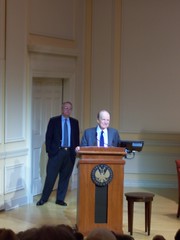
George Stevens Jr. speaking about his Herblock film while Frank Swoboda looks on.

Richard Thompson and Rob Rogers.

Michael Cavna and Kevin Rechin.
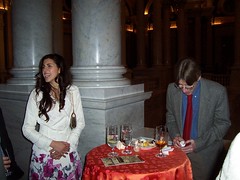
Nick G's friend from Greece and Richard Thompson.
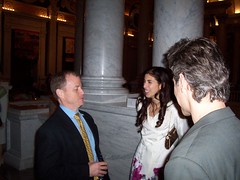
Kevin Rechin, Nick's friend from Greece and the back of Nick's head.
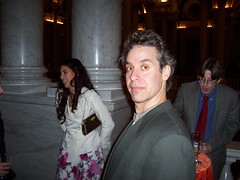
Nick Galifianakis with his friend from Greece and Richard Thompson (in the red tie) in the background.
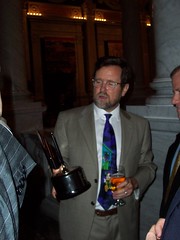
Matt Wuerker's contemplating the uses to which the award may be put.
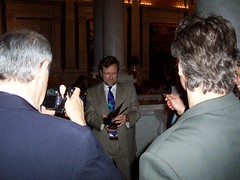
Everyone wants a picture of Matt with his award.

Richard Thompson - not ALL of those drinks were his.
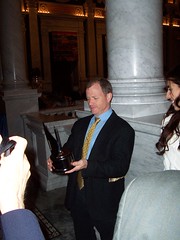
Kevin Rechin's STILL contemplating the award.

Kevin Rechin's now got it all - the award, the girl, the cheesy grin. It's better not to ask questions.
Tuesday, March 30, 2010
Tomorrow: Warren Bernard lecture on Herblock at LoC
Monday, March 15, 2010
March 31: Herblock lecture by Warren Bernard
This time, I am going to lecture on his editorial independence, and get into a few battles he had with his editors. This will include showing the cartoons that even the Washington Post did not run (though indeed his syndicated papers did run them) when Herblock and the then-editor of the Post, Phil Graham went head to head. This was not the first time Herblock battled his editors; we will also get into a large battle he had prior to his coming to the Post He was an ardent anti-isolationist, much to the chagrin of the isolationist syndicate he worked for.
We will get into all of this, and show cartoons galore!!
Here are the details, hope to see you!!!
Date: Wednesday March 31
Time: Noon (that 12:00PM...)
Place: Madison Building, Library of Congress
101 Independence Ave Washington, DC
Room: Dining Room A, 6th Floor
Metro: Capitol South exit, Blue or Orange Line
Wednesday, March 10, 2010
Thursday, February 04, 2010
Herblock! exhibit gallery talks schedule
Gallery Talks, noon-12:30 p.m.
Wednesday, February 10
Herblock! exhibition, 2nd Floor, South Gallery, Jefferson Building
Herblock! exhibition, 2nd Floor, South Gallery, Jefferson Building
Herblock! exhibition, 2nd Floor, South Gallery, Jefferson Building
Tuesday, February 02, 2010
John M. Baer

BAER, JOHN MILLER. REP. FROM NORTH DAKOTA, 1917-1921
LC-DIG-hec-09390
Harris & Ewing Collection (Library of Congress)

BAER, JOHN MILLER. REP. FROM NORTH DAKOTA, 1917-1921
LC-DIG-hec-09389
Harris & Ewing Collection (Library of Congress)
and one drawing:
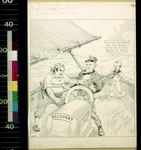
Ohio State U's Cartoon Library has 5 clipped comics by him.
Monday, February 01, 2010
Swann Fellowship applications due in 2 weeks
http://www.loc.gov/rr/print/swann/swann-fellow.html
Email swann@loc.gov if you have questions.
Herblock! speedtour post up on City Paper blog
How to Zip through "Herblock!" in 10 Minutes, Make that Meeting on the Hill
Posted by Mike Rhode on Feb. 1, 2010, at 11:50 am
Wednesday, December 30, 2009
Little Nemo animation entered into Library of Congress Registry
The Library's press release says:
Little Nemo (1911)
This classic work, a mix of live action and animation, was adapted from Winsor McCay’s famed 1905 comic strip "Little Nemo in Slumberland." Its fluidity, graphics and story-telling was light years beyond other films made during that time. A seminal figure in both animation and comic art, McCay profoundly influenced many generations of future animators, including Walt Disney.
This is not the 1990s Japanese animation of course. Speaking of McCay, I had an original of one of his political drawings in my hands this weekend. Hoo-hah!
Another cartoon I'm not familiar with was added as well:
Quasi at the Quackadero (1975)
"Quasi at the Quackadero" has earned the term "unique." Once described as a "mixture of 1930s Van Beuren cartoons and 1960s R. Crumb comics with a dash of Sam Flax," and a descendent of the "Depression-era funny animal cartoon," Sally Cruikshank’s wildly imaginative tale of odd creatures visiting a psychedelic amusement park careens creatively from strange to truly wacky scenes. It became a favorite of the Midnight Movie circuit in the 1970s. Cruikshank later created animation sequences for "Sesame Street," the 1986 film "Ruthless People" and the "Cartoon Land" sequence in the 1983 film "Twilight Zone: The Movie."
Herblock! exhibit review
Herblock! Sara Duke, Martha Kennedy and Cynthia Wayne. Washington, DC: Library of Congress, October 13, 2009-May 1, 2010.
By the terms of Herbert “Herblock” Block’s will, the Library of Congress must mount an exhibit of his work every three years. In spite of Block’s staggering 72-year long professional career and four Pulitzer Prizes, this reviewer begins to feel a bit jaded. Fortunately, this is an excellent exhibition that is well worth seeing and is accompanied by an excellent companion book, Herblock by Haynes Johnson and Harry Katz (New York, Norton, 2009) that also has a cd of 18,000 of Block’s cartoons (produced by Warren Bernard). The occasion for the large scale of these events was Herblock’s 100th birthday.
The exhibit is in a new gallery, created recently from a reading room, and to get to it, one has to walk through a recreation of Thomas Jefferson’s library – a highlight for any book lover. The curators (who are my friends) cleverly chose 82 original drawings that have not bee on display before. These are out of the 14,460 cartoons and 250,000 roughs he left to the library. They also added the twelve books of his cartoons that Block published in his lifetime. These copies, unlike the ones originally added to the Library, have their dustjackets because they are a recent donation to the Prints and Photographs division from the Herb Block Foundation.
The exhibit opens with a précis of who Block was and includes some of his iconic images such as the footsteps leading from the Watergate break-in to Nixon’s White House. “The Approaching Perils” covers his early years. One can see Block’s early typical Midwestern cartoonist style using pen and ink – a style that is unrecognizable to us as Herblock. This style soon gives way to his familiar use of heavy crayon or graphite lines. Some notable works were “Winged Victory” (1938) in which he quoted the sculpture from Samothrace, and “What ‘Peace Now’ Would Mean” (1940) in which he showed Hitler armed with a machine gun and sitting on the globe.
Other sections were “Psychopathic Ward” on the Depression, fascism and World War II, “White is Black, Black is White, Night is Day—“ on the Cold War, “Naughty, Naughty” on McCarthyism, “Everything’s [Not] Okay” on the 1960s, “Here He Comes Now” on Richard Nixon, “It Gets Into Everything” on the 1970s and terrorism, “Joy to the World” on Ronald Reagan, “Closing Years, Contrasting Styles of Leadership” on Clinton and the elder George Bush, and “Classic Cartoons by a Master” to catch anything that might have been missed.
One could easily select favorite drawings from each section – my notebook is full of notations such as “Man’s Reach” (1968) in which he drew, apropos of Apollo 8, a white hand with its finger and thumb meeting to encircle the moon on top of a black layer covering most of the paper. By the end of his life, and thus the end of the exhibit, Block’s ability was slipping somewhat and the images are covered with Avery labels and ink redrawings. “Creationism or Evolution – That’s Up to the States” has Bush’s head reworked and pasted on, but the final image in print would have looked fine.
During the press tour Harry Katz noted that in the future “you’re not going to see cartoons on the wall – newspapers are changing” and “With Herblock missing, we need to get the voice of the cartoonist out there and revitalizing the art form” – two sentiments that most readers of IJOCA (and this blog!) can agree with and hope for the best.
Thursday, November 26, 2009
That darn Herblock!
Library of Congress Spins Lefty Cartoonist Herblock as an 'Independent Spirit'
By Scott Whitlock
Newsbusters November 23, 2009
